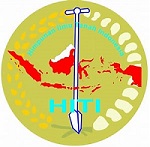IDENTIFIKASI SIFAT KIMIA TANAH PADA LAHAN TANAMAN BAWANG MERAH (Allium ascalonicum, L.) DI DESA TALIKURAN KECAMATAN REMBOKEN KABUPATEN MINAHASA
DOI:
https://doi.org/10.35791/se.22.1.2022.38911Keywords:
identification, Soil Chemical Properties, Land of Shallots PlantationAbstract
IDENTIFICATION OF SOILS CHEMICAL PROPERTIES ON LAND OF SHALLOTS PLANTATION (Allium ascalonicum, L.) IN TALIKURAN VILLAGE REMBOKEN DISTRICT MINAHASA REGENCY
The research aims to identify the soil chemical properties on land of shallots plantation (Allium ascalonicum, L). The research method used is a survey method. Determining the sample by purposive sampling (based on need) in the area of shallot plantationas much as two sample (S1 and S2) and as a comparison of areas outside the Shallots Plantation area (land without tillage) as much as one sample (S3). Soil samples were taken using the composite method (zig-zag method). Analysis of soil chemical properties was carried out at the Laboratory of Chemistry and Soil Fertility, Departement of Soil. Data analysisi is tabular data analysis. The results of the identification of soil chemical properties on land of shallots plantation in Talikuran Village Remboken District Minahasa Regency showed that the degree of soil acidity (soil pH) was classified as slightly acidic, N-total soil was classified as low to moderate, P-available in the soil was classified as moderate, K-available in the soil range 24,22-25,11 ppm classified as moderate, and C-organic soil is classified as very low to low.
Downloads
Published
How to Cite
Issue
Section
License
Authors who publish in this journal agree to the following terms:
Authors hold their copyright and grant this journal the privilege of first publication, with the work simultaneously licensed under a Creative Commons Attribution License that permits others to impart the work with an acknowledgment of the work's origin and initial publication by this journal.
Authors can enter into separate or additional contractual arrangements for the non-exclusive distribution of the journal's published version of the work (for example, post it to an institutional repository or publish it in a book), with an acknowledgment of its underlying publication in this journal.
Authors are permitted and encouraged to post their work online (for example, in institutional repositories or on their website) as it can lead to productive exchanges, as well as earlier and greater citation of the published work (See The Effect of Open Access).




